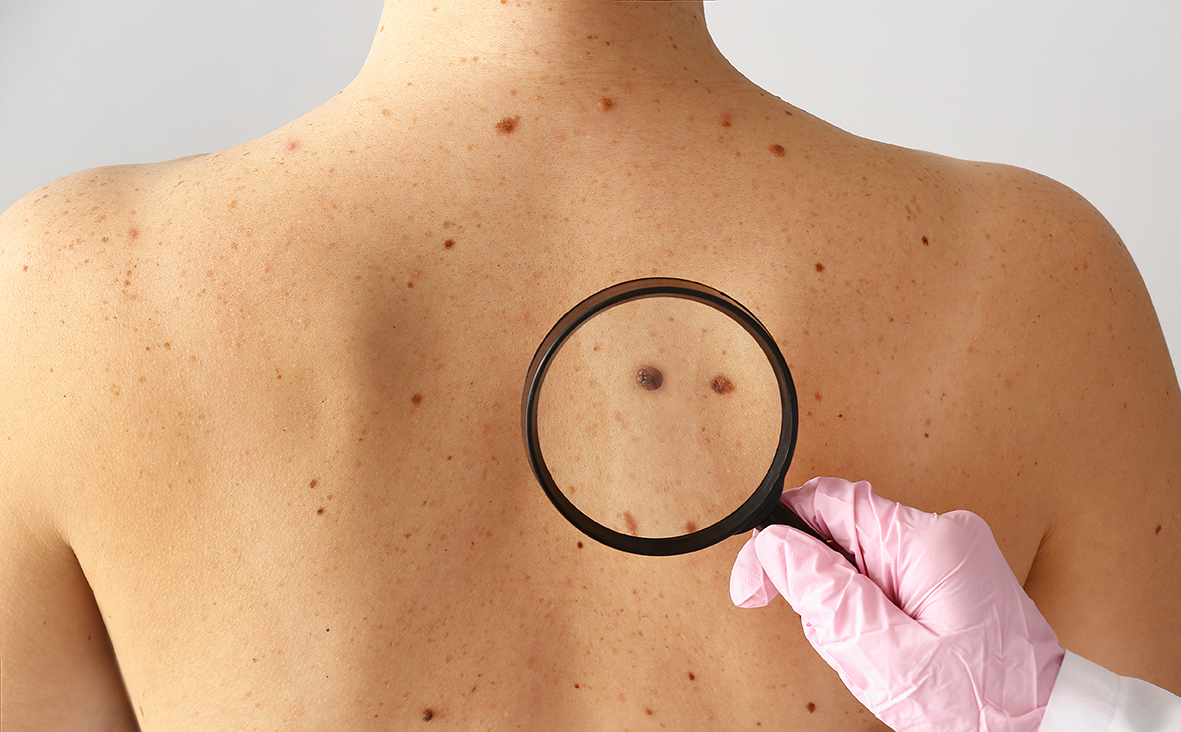- Chris Comans
- 0 Comments
When it comes to our health, our skin often serves as the body’s first line of defence and a reflection of our internal well-being. Skin spots, whether they are freckles, moles, or other marks, can be harmless. However, some changes in these spots can indicate a more serious issue, such as skin cancer. As we age or experience changes in our environment, it becomes increasingly important to be vigilant about our skin health.
Here, we will explore the top signs that a skin spot might be dangerous and what steps to take if you notice any concerning changes.
Signs of Potentially Dangerous Skin Spots
1. Asymmetry
One of the first signs that a skin spot could be dangerous is asymmetry. A normal, benign mole or skin spot is usually symmetrical—meaning if you were to draw a line through the middle, both halves would look the same. If you notice that a mole or spot has an uneven shape or if one half doesn’t match the other, it might be a cause for concern. This asymmetry is often one of the first indicators of melanoma, the most serious form of skin cancer.
2. Irregular Borders
In addition to asymmetry, the borders of a skin spot can provide valuable information about its potential danger. Healthy moles typically have smooth, even borders. If you notice that a spot has jagged, notched, or irregular edges, this may indicate that the mole is changing and could be malignant. Pay attention to any growths that appear to be spreading or have undefined edges. Consider scheduling an on-site skin cancer screening for professional evaluation.
3. Colour Variation
Another critical factor to consider is the colour of the spot. A normal mole is usually a single shade of brown or tan. However, if you observe a spot that has multiple colours—such as shades of brown, black, red, white, or blue—this variation can be a warning sign. Melanoma can appear in a variety of colours, and any significant change in colour can indicate that further examination is necessary.
4. Diameter
The size of a skin spot can also be an important indicator of its potential danger. Moles that are larger than 6mm (about the size of a pencil eraser) are more likely to be problematic. However, it’s important to remember that some melanomas can be smaller than this, so size alone should not be the only factor in your assessment. If you notice a mole that appears to be growing or changing in size, it’s crucial to have it evaluated by a skin cancer screening practitioner.
5. Evolving
The “E” in the ABCDE rule for skin cancer detection stands for evolving. This means that any changes in size, shape, colour, or elevation of a skin spot over time should be taken seriously. If you have a mole that has changed noticeably, or if new symptoms such as itching, bleeding, or crusting have developed, it’s essential to consult a skin cancer screening practitioner. Learn why annual skin checks are crucial for outdoor enthusiasts.
6. Itching or Pain
If a skin spot is itchy, painful, or tender to the touch, it could be a sign of a problem. While benign moles are typically harmless and painless, any discomfort can indicate an underlying issue. This symptom may accompany other warning signs, so it’s essential to pay attention to these sensations and seek medical advice if they occur.
7. New Growths
Finally, new growths on your skin, especially if you are over the age of 30, should be taken seriously. While it’s normal to develop new moles or spots from time to time, sudden or rapid changes in your skin can be cause for concern. New spots that arise, particularly if they have any of the other warning signs mentioned above, should be evaluated by a skin cancer screening practitioner.
Conclusion
While many skin spots are harmless, it is crucial to be proactive about your skin health. Familiarising yourself with the ABCDEs of skin cancer can help you identify any potential issues early, which is key to effective treatment. Regular skin checks, both at home and with a healthcare professional, are vital in catching any changes before they become more serious. If you notice any of the signs mentioned above, don’t hesitate to schedule an appointment with a skin cancer screening practitioner.
Your skin is your body’s largest organ and deserves the utmost care and attention. Remember, early detection is the best defence against skin cancer. Stay vigilant, and take charge of your skin health!
